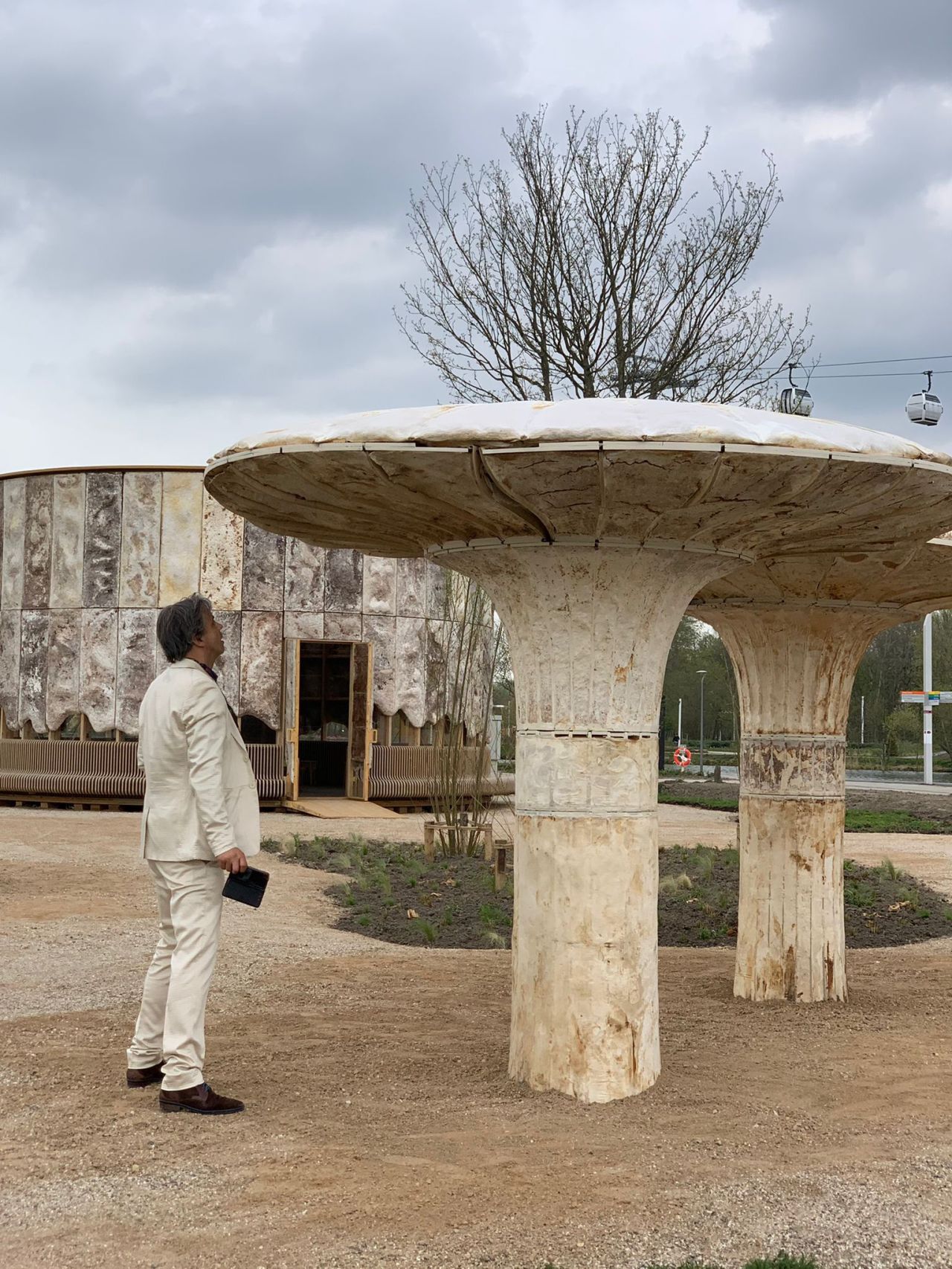
Transform your ideas with experts in mushroom research
Tailored consulting services for all your mycelium needs
Our specialised team with fungal biologists and mushroom specialists can develop a research program, conduct experiments, coordinate research together with other institutions and give advice on mushroom business. We can produce sterilized substrate on a scale of 4000 liters per batch at our facility in Bleiswijk.
Peter Oei
Consultancy
Book a 1.5-Hour live session with an expert and take your plans to the next level!
Do you have ambitious plans for a mushroom farm or mycelium production? Our expert can help you turn your vision into research and reality.
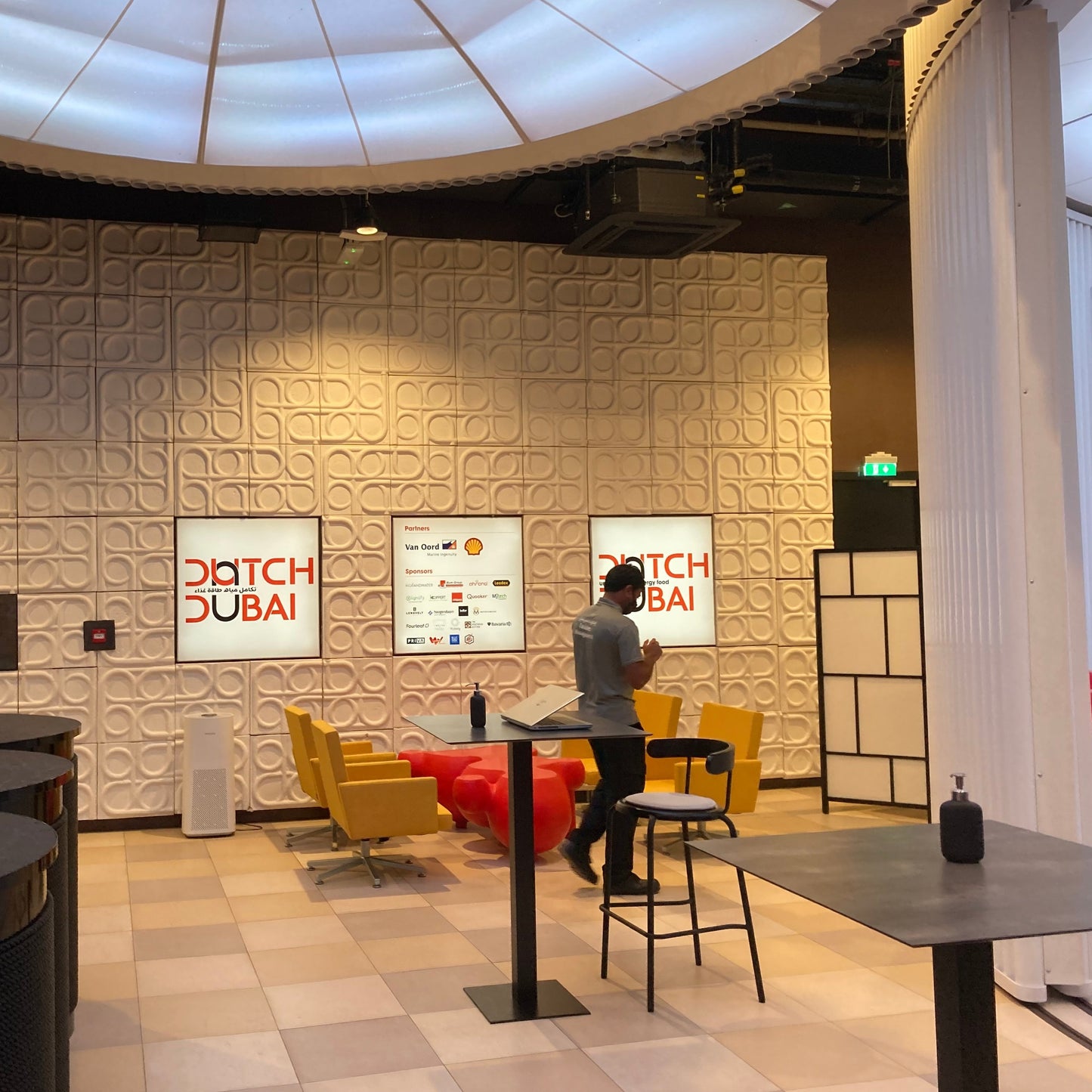
Why mushrooms?
The popularity of mushrooms and their applications is growing rapidly. A whole range of new functions is currently being tested. Mycelial extracts van replace chemical colorants, mycelium can be used for a whole range of applications (leather, furniture, food, insulation and building materials). The potential of fungal proteins is yet to be discovered. More traditional uses are perfect examples of circular principles. King oyster mushrooms thrive on residues from agriculture, the white button mushroom sector may actually contribute to tomato production, as its spent compost can be mixed to replace the fossil based substrates. A recent patent showed that fungi are able to degrade asbestos, specific groups of entheogenic mushrooms have been reported to be effective against PTSD and other severe depressions. An incredible broad range of applications will be introduced on the market in the upcoming years. No other group of organisms is better suited to communicate on circularity, as breaking down organic matter is an important feature of many fungi. Mushrooms are part of the solution of big problems.
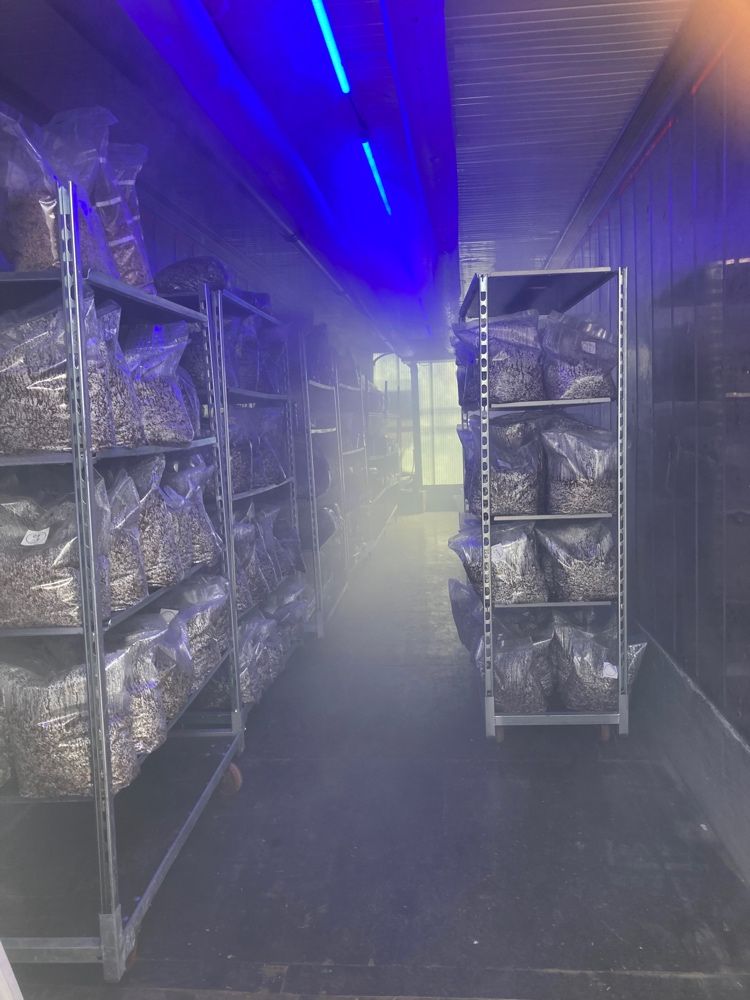
About us
The foundation ECO Consult (non profit organization) started 35 years ago; we have coordinated and performed research on a large number of projects in the field of mushrooms, sustainability and mycelium development. Most notable in the past years were the exhibits at the Dubai WorldExpo and Floriade WorldExpo in The Netherlands. Recently we developed energy saving substrate production systems.
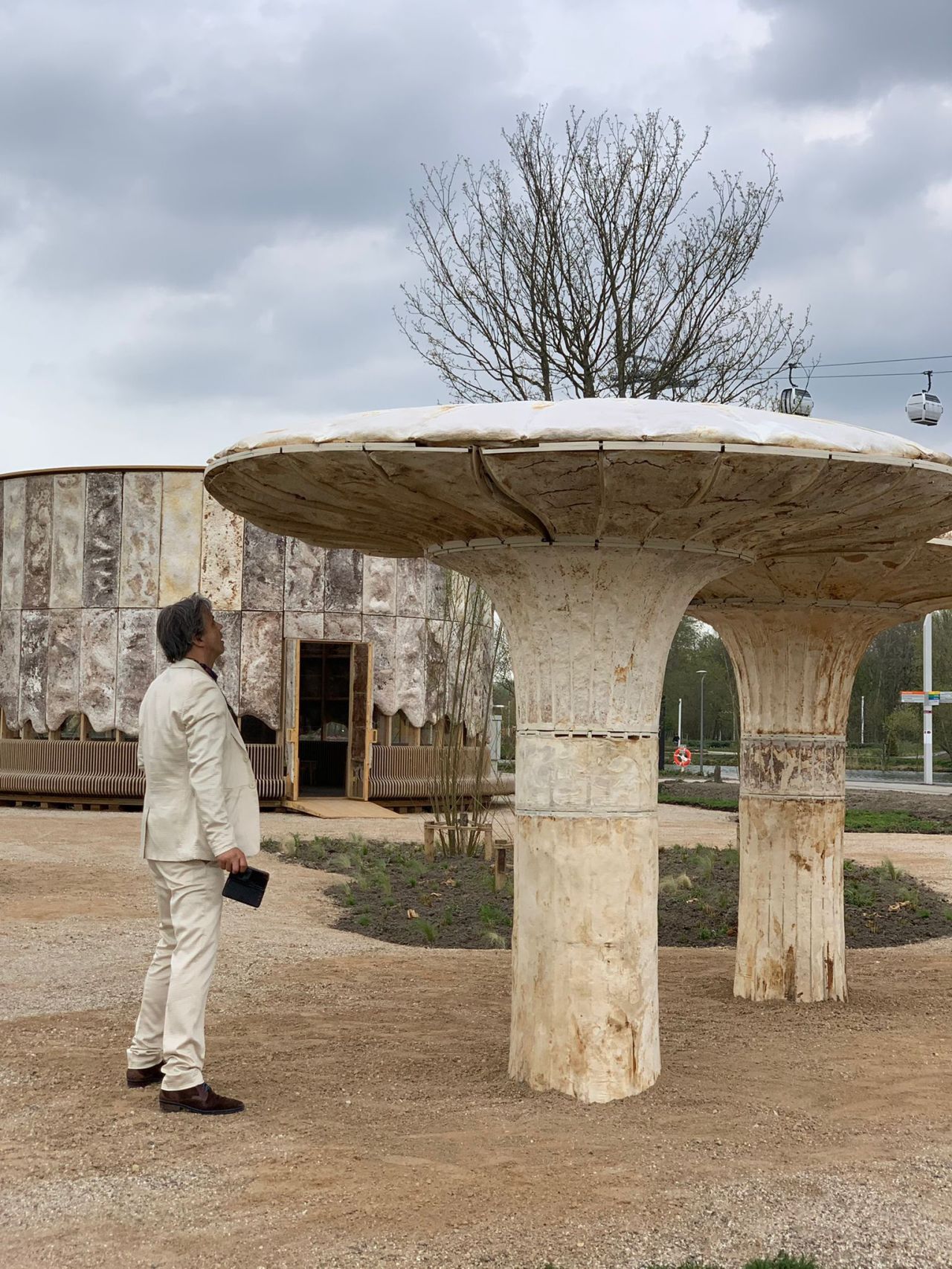
From our chairman Peter Oei
My first experience with mushrooms dates from 1984 when I viewed mushroom cultivation as a circular venture. In the Mushroom Tower in Nijmegen we cultivated more than 20 different mushrooms. TOOL (Technology transfer developing countries) asked me to write a Manual on Mushroom Cultivation for developing countries, which I kept updating. Over the years, I edited and wrote six books on mushroom cultivation, some were translated to French, Chinese and Ubuntu. It was great to experiment with new applications when working for SIGN and now we have to scale up. My dream? A mushroom Experience where we can show how mushrooms solve sustainable problems.
Highlighted projects
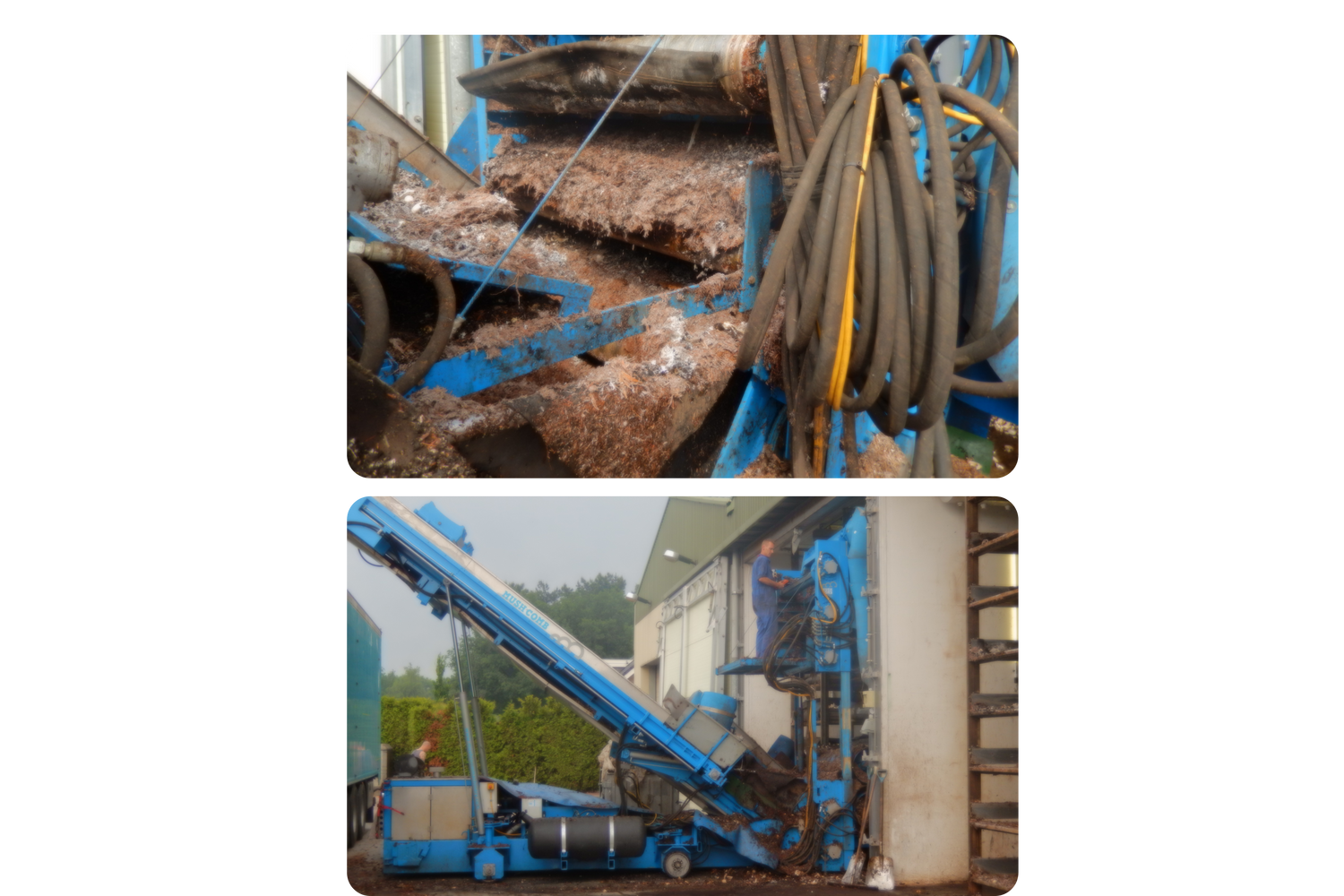
Separating casing soil
Lets be honest: many innovative projects fail, only some have an impact. One project from 2011 with Sikes Champignons resulted in a method to separate the casing soil from the underlying compost. This method is now applied on many Dutch mushroom farms. The casing soil can be reused (it contains few nutrients) e.g. as a potting soil. This method is now being used by more than half of the sector. MushComb developed the machines to perform the separation quickly during emptying the grow rooms.
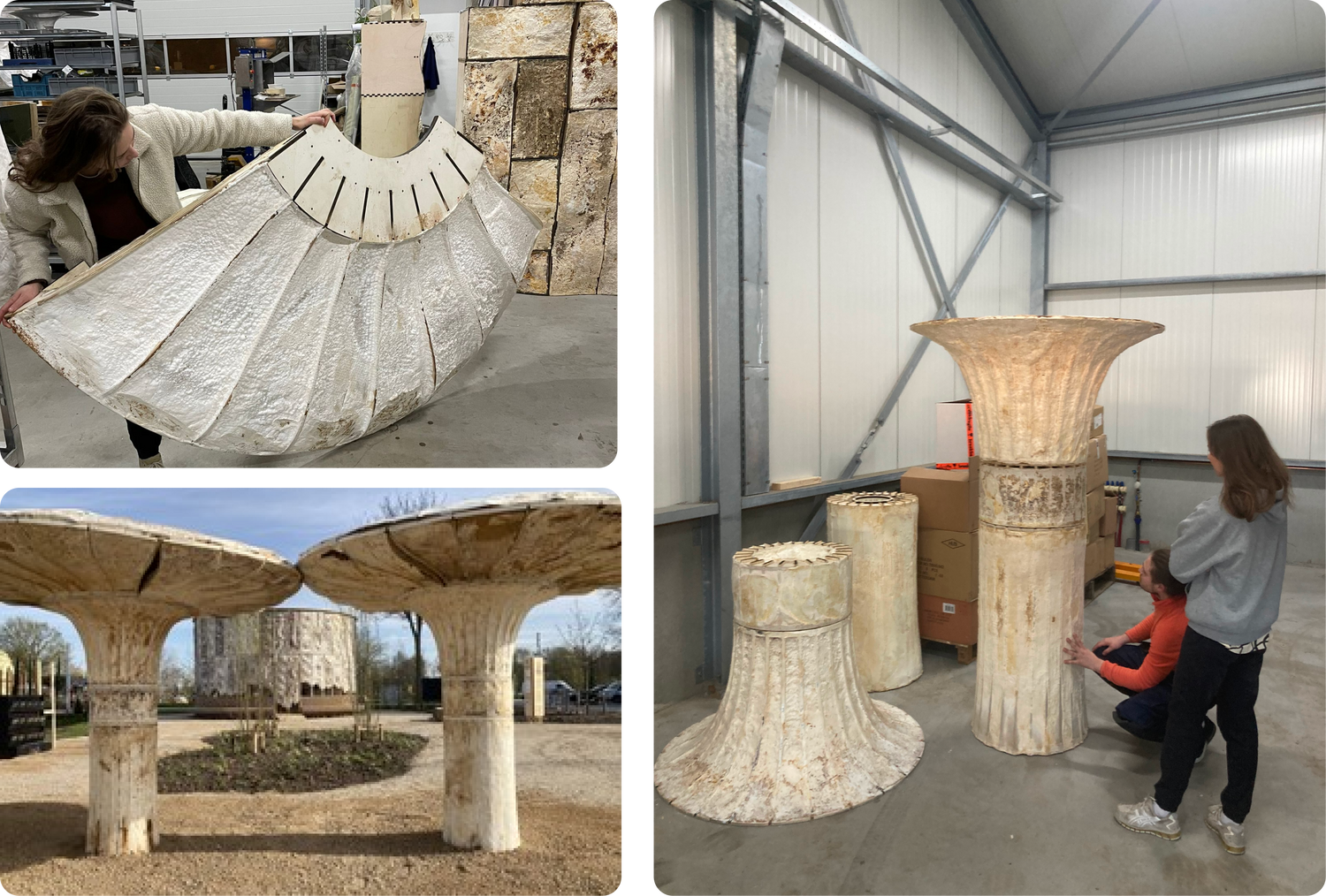
Development and installation of biobased busshelter
WorldExpo Floriade commisioned us at the SOGN Living Lab in Bleiswijk to develop a biobased bus stop. The biophilic design by Studio Cartier was inspired by mushrooms. The revolutionary and experimental mushrooms of each 3 meters high and wide were constructed with wood, hemp mycelium, and a textile as the skin. The textile decreased the scrapability of the surface, the wood increased the load bearing. Wind load and safety aspects demanded a lot of attention.
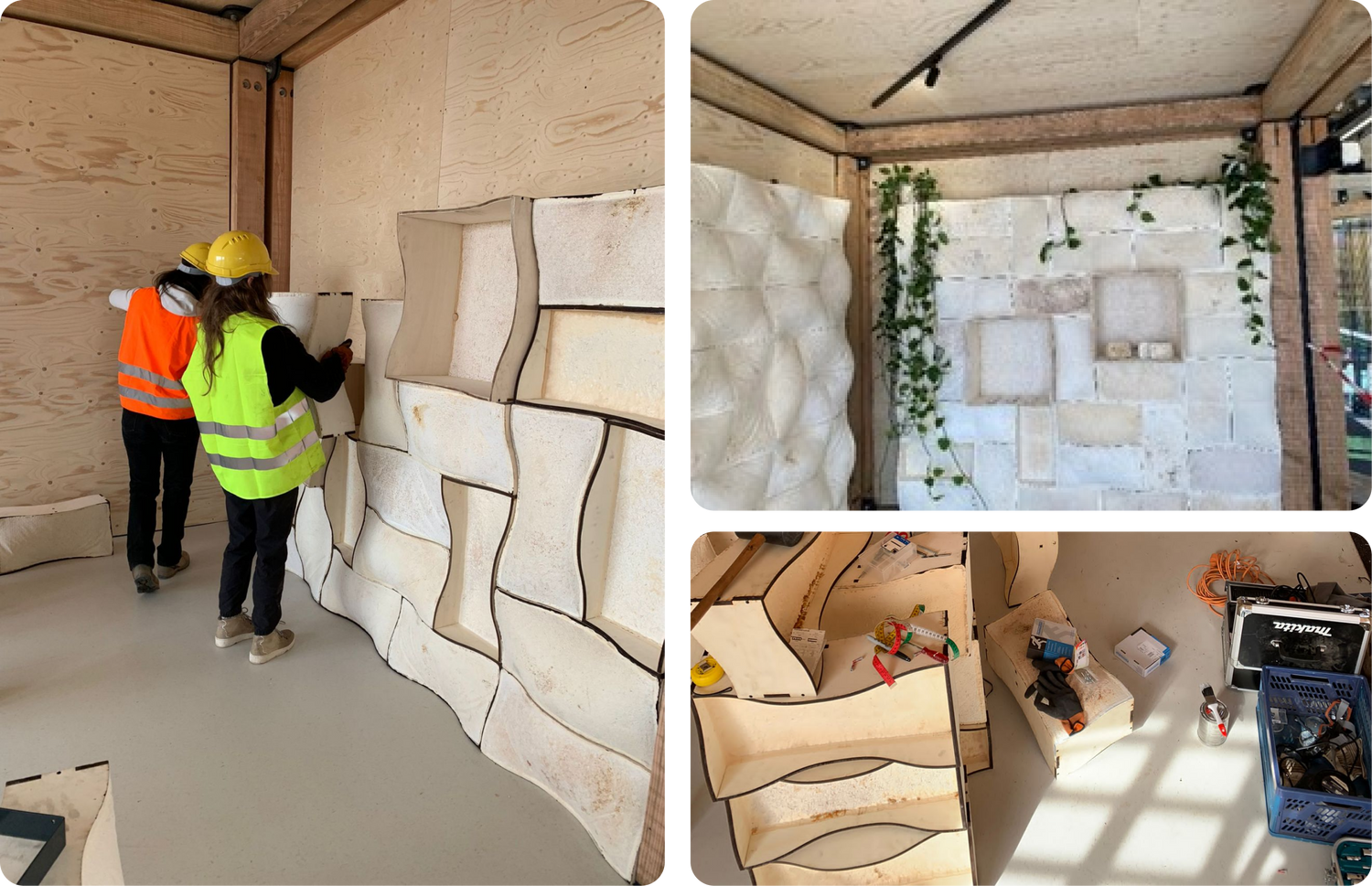
Mymo building blocks
Another product devekopment with Studio Cartier were osteomorphic building blocks. A special filling technique was developed to produce the blocks efficiently. The prototypes were made in the Living Lab, the 100 pieces for the Floriade World Expo were produced by Grown.bio. The blocks can be turned in different directions and still fit each other. The wooden sides actually serve as a lost mold for the mycelium composite. The blocks were designed in the following
sizes: 30 x 60 cm, 30 x 120 en 60 x 60.
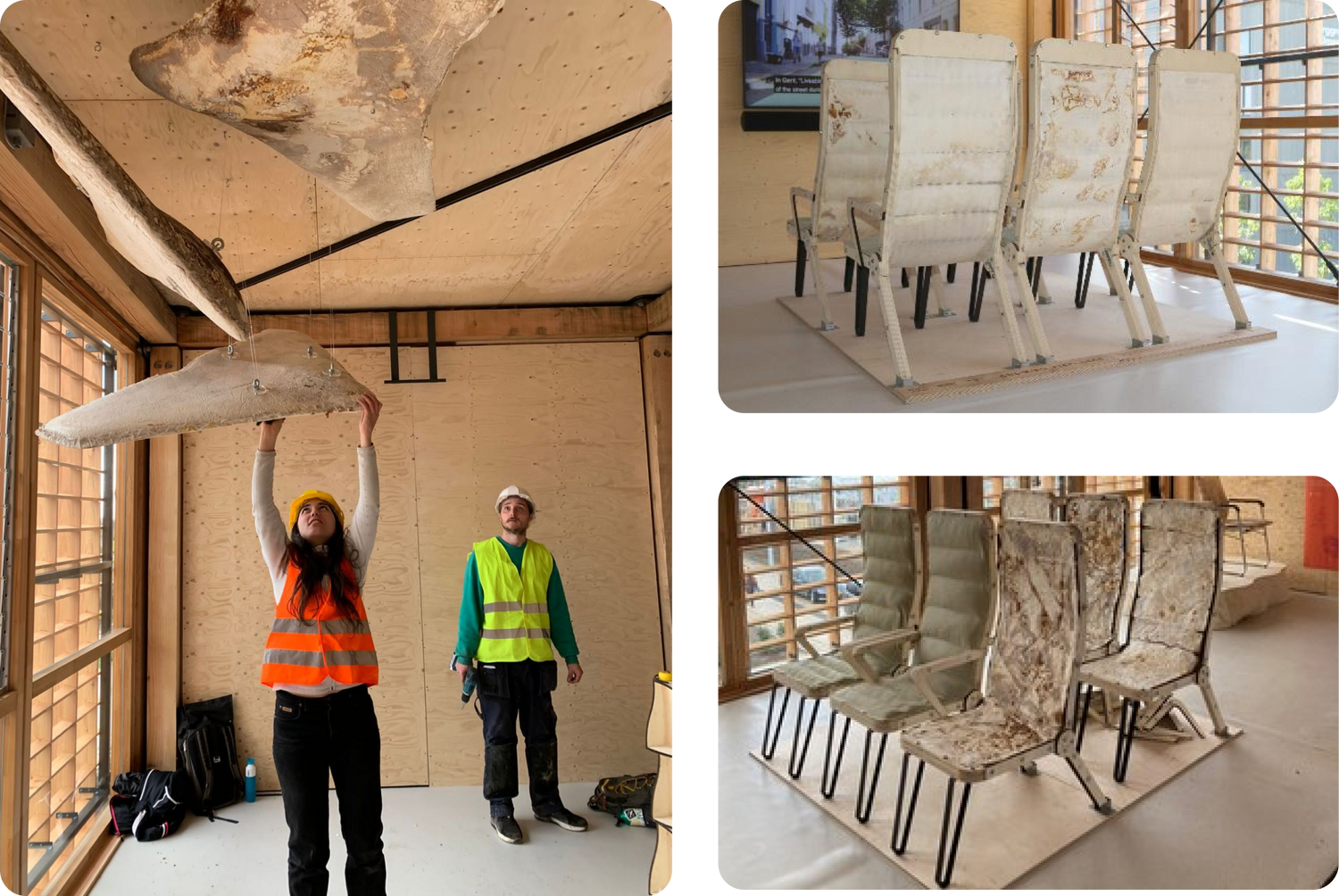
Growing Airplanes
Growing airplanes was the two year program supported
by Rabobank, Airbus and Ministry of Infrastructure to develop new materials, like carbon fiber colted plates fully grown with mycelium. Some of the results were shown at Floriade World Expo, like the mycelium airplane seats with a combination of wood, pregrown mycelium textile, and mycelium composite.

